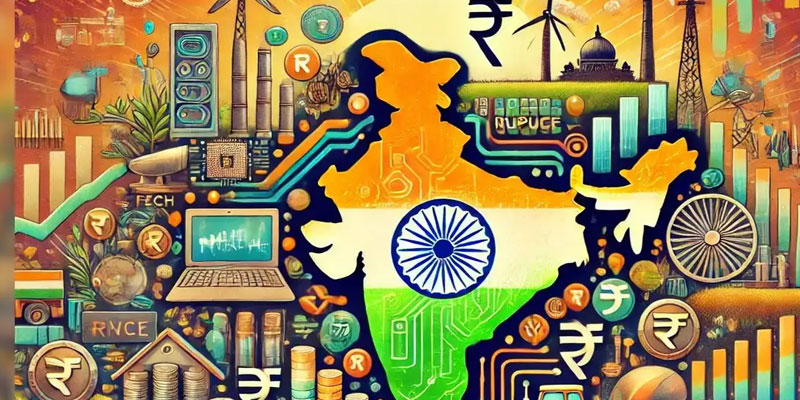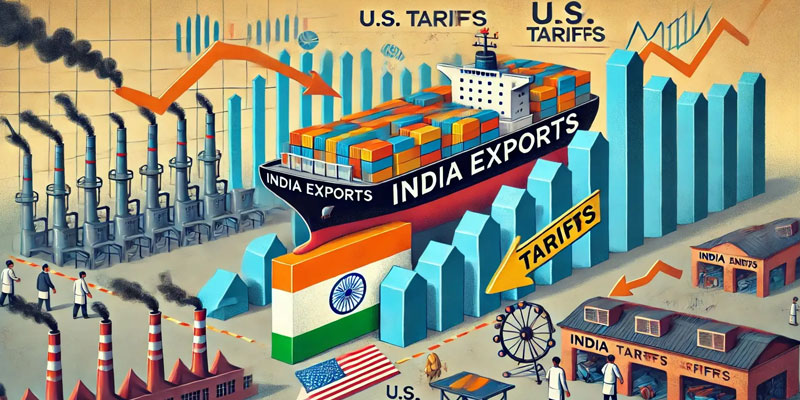A New Chapter in India’s Economic Story
India has achieved a major global economic milestone — surpassing Japan to become the fourth-largest economy in the world, according to the latest International Monetary Fund (IMF) data. This moment is not just symbolic; it marks the country’s growing resilience, strategic reforms, and demographic potential converging to reshape the global order. With steady GDP growth and robust projections ahead, India is now poised to overtake Germany in the next 2.5 to 3 years, stepping into the top three global economies — behind only the United States and China.
Crossing the $4 Trillion Mark: A New Economic Reality
At the recent 10th Governing Council Meeting of NITI Aayog, CEO B.V.R. Subrahmanyam confirmed that India’s nominal GDP now stands at $4.3 trillion, officially making it the world’s fourth-largest economy, overtaking Japan. Back in 2015, India’s GDP stood at $2.1 trillion — which means the economy has more than doubled in less than a decade.
This growth is underpinned by a blend of domestic demand, digital innovation, infrastructure investments, and strong service exports — turning India into a global engine of growth.
Fastest-Growing Major Economy: India vs the World
While several advanced economies are showing signs of stagnation, India continues to outperform its global peers in economic growth. According to IMF projections for 2025, India is expected to grow at a robust rate of 6.8%, maintaining its position as the fastest-growing major economy. In contrast, the United States, the world’s largest economy, is projected to grow at just 1.8%, with a slight slowdown to 1.7% in 2026. China, ranked second globally, is expected to grow at 4.6%, as it battles both domestic and external economic headwinds.
Meanwhile, Germany, currently the world’s third-largest economy, is projected to stagnate with 0% growth in 2025 and barely improve to 0.9% in 2026. It is forecast to be one of the worst-hit economies in Europe due to the ongoing global trade war and declining industrial competitiveness. Japan, which India has just overtaken, is also forecast to grow at a modest 0.6% in both 2025 and 2026, reflecting its struggle with an aging population and limited economic momentum.
In the broader European context, the Euro Area is expected to grow only 0.8% in 2025, rising slightly to 1.2% in 2026. Key economies like France and the United Kingdom are projected to grow at around 0.6% to 1.4%, while Spain may perform slightly better with 2.5% growth in 2025, though that too is expected to decline to 1.8% by 2026. This contrast sharply highlights India's unique position as a high-growth economy amidst a global slowdown.
Global Slowdowns: Germany and Japan Lose Ground
India’s rise is happening while Germany and Japan struggle with stagnation:
· Germany is expected to see 0% growth in 2025, followed by a meager 0.9% in 2026, primarily due to being hit hardest by the global trade war and slowing industrial output.
· Japan faces similar issues, with just 0.6% growth projected for both 2025 and 2026.
Both nations are struggling to maintain their economic clout, in contrast to India’s expanding digital economy, tech services boom, and a massive young workforce driving consumption.
India’s Growth Engines: What’s Fueling the Climb?
Several factors are driving India’s economic leap:
· Demographics: With a median age under 30, India boasts a dynamic workforce.
· Digital Economy: UPI-led payment systems and tech adoption are revolutionizing services and commerce.
· Reforms & Infrastructure: Policies like GST, PLI schemes, and high-speed infrastructure development have accelerated growth.
· Exports & Manufacturing: India's move towards becoming a manufacturing hub is strengthening its global trade position.
Comparison with Leading Economies
· The US remains the largest economy with a projected GDP of $30.5 trillion by 2025 but is expected to slow to 1.7% growth by 2026.
· China follows with $19.2 trillion but faces internal and external economic challenges.
· The Eurozone’s growth remains fragile, with average projections below 1%.
In contrast, India’s policy consistency and investment in innovation stand out, making it a reliable growth story.
India’s Time Has Come
India’s emergence as the world’s fourth-largest economy is more than just a ranking—it reflects a maturing, confident, and forward-looking economy. With robust growth projections, policy stability, and demographic advantage, India is well on track to become the world’s third-largest economy by 2028.
This milestone must not spark complacency but inspire continued reforms, inclusive growth, and global collaboration. As India steps into the league of global economic giants, the goal must now shift from size to strength, and from numbers to impact — shaping a resilient and equitable future for 1.4 billion people and beyond.
(With inputs from agencies)






















